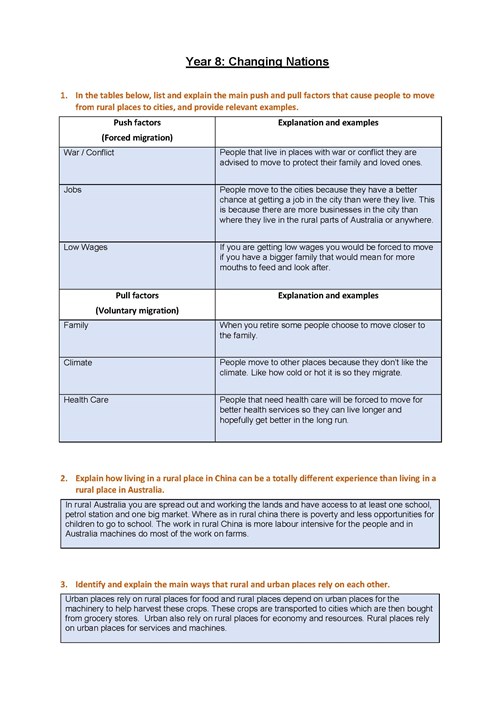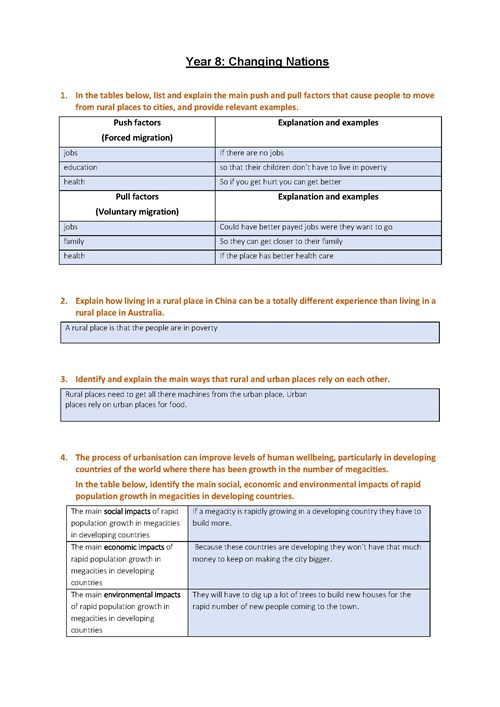- Home
- Resources
- Work samples
- Samples
- Short response: Changing nations - ABOVE
Geography
Year 8
Above satisfactory
Short response: Changing nations
Summary of task
Students were introduced to the topic of human migration within and between countries and its impact on the concentration of populations in major cities. During this study, comparisons were made between urban and rural environments in Australia and China.
For this task, students were given maps showing the population distribution over time and a table containing statistics of internal migration in Australia. They were asked to interpret, analyse and present these data and respond to a number of questions. The task was completed during class time over four lessons.
Achievement standard
By the end of Year 8, students explain geographical processes that influence the characteristics of places and explain how places are perceived and valued differently. They explain interconnections within environments and between people and places and explain how they change places and environments. They compare alternative strategies to a geographical challenge, taking into account environmental, economic and social factors.
Students identify geographically significant questions from observations to frame an inquiry. They evaluate a range of primary and secondary sources to locate useful and reliable information and data. They select, record and represent data and the location and distribution of geographical phenomena in a range of appropriate digital and non-digital forms, including maps at different scales that conform to cartographic conventions. They analyse geographical maps, data and other information to propose explanations for spatial distributions, patterns, trends and relationships, and draw reasoned conclusions. Students present findings, arguments and ideas using relevant geographical terminology and digital technologies in a range of appropriate communication forms. They propose action in response to a geographical challenge, taking account of environmental, economic and social factors, and predict the outcomes of their proposal.
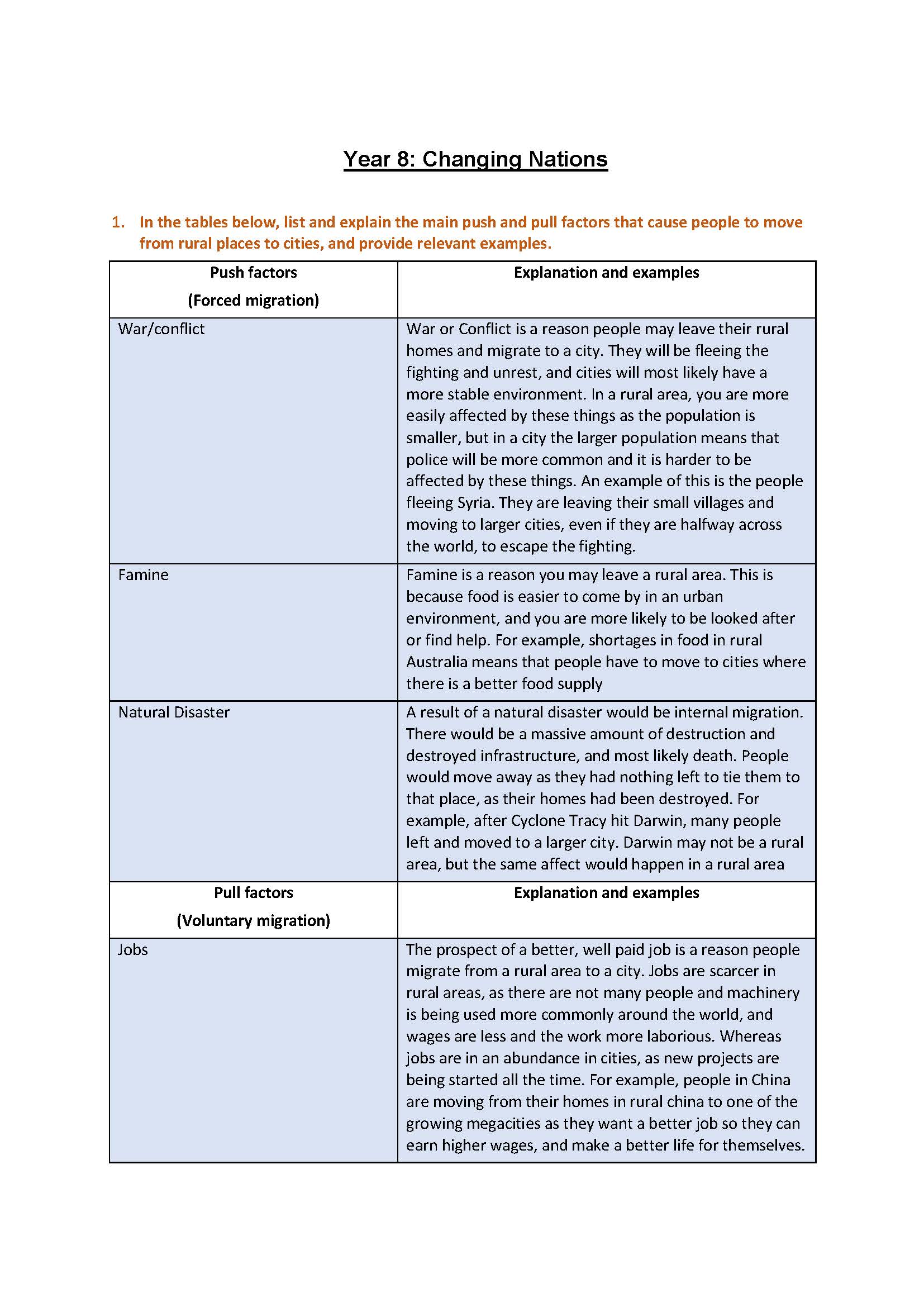 1
Annotation 1
1
Annotation 1
Identifies three push factors 2 Annotation 2
Provides thorough explanations and specific examples of push factors 3 Annotation 3
Uses a relevant example to support a pull factor
-
Annotations
-
1
Annotation 1
Identifies three push factors -
2
Annotation 2
Provides thorough explanations and specific examples of push factors -
3
Annotation 3
Uses a relevant example to support a pull factor
 1
Annotation 1
1
Annotation 1
Identifies and explains a number of pull factors associated with the movement of peoples 2 Annotation 2
Uses specific examples of pull factors to support explanations 3 Annotation 3
Uses environmental, economic and social factors to explain the differing rural experiences in China and Australia 4 Annotation 4
Provides specific examples that demonstrate the relationships between places 5 Annotation 5
Presents a detailed explanation of the interconnection of rural and urban places
-
Annotations
-
1
Annotation 1
Identifies and explains a number of pull factors associated with the movement of peoples -
2
Annotation 2
Uses specific examples of pull factors to support explanations -
3
Annotation 3
Uses environmental, economic and social factors to explain the differing rural experiences in China and Australia -
4
Annotation 4
Provides specific examples that demonstrate the relationships between places -
5
Annotation 5
Presents a detailed explanation of the interconnection of rural and urban places
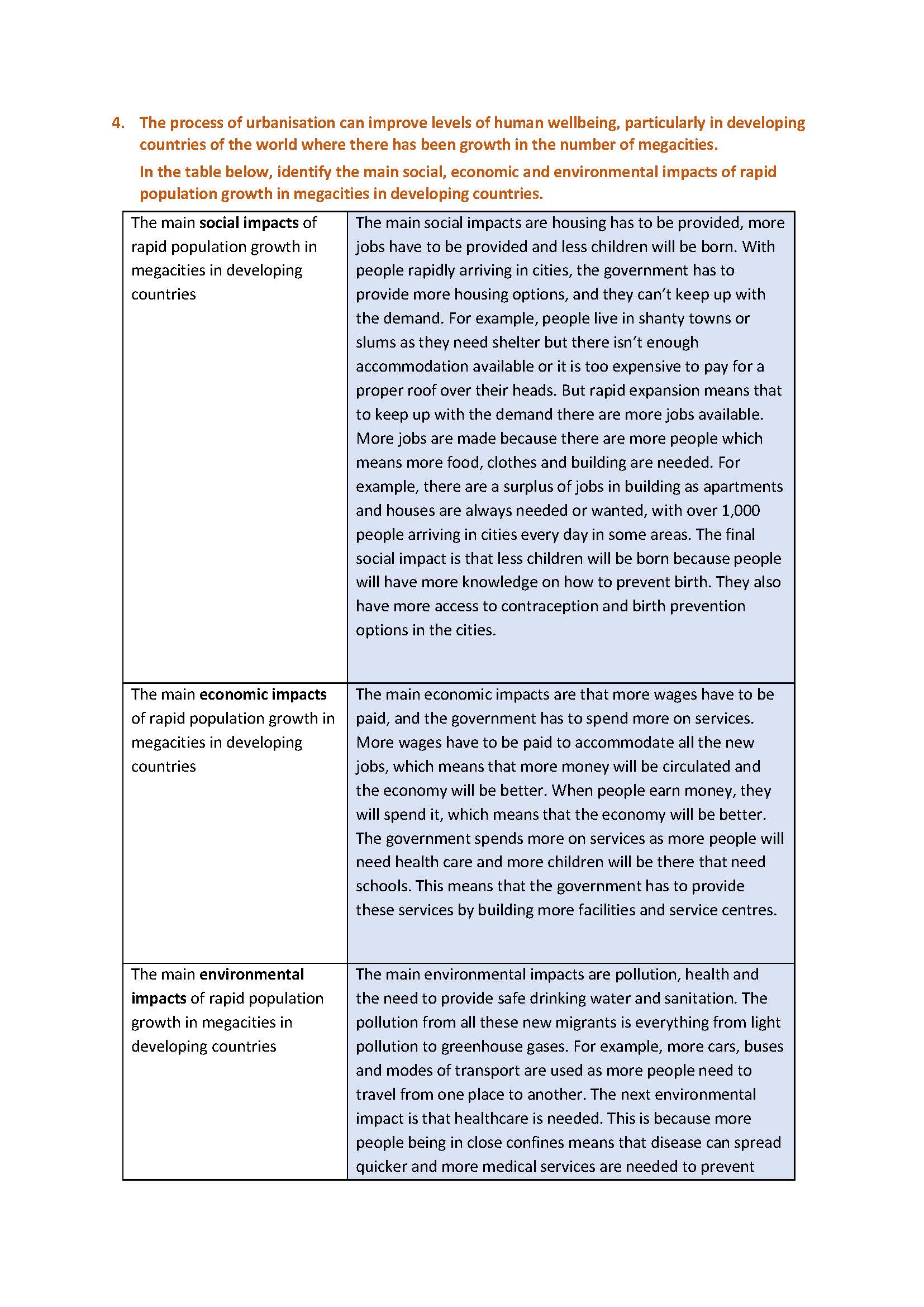 1
Annotation 1
1
Annotation 1
Identifies and explains social, economic and environmental impacts of rapid population growth 2 Annotation 2
Supports explanations for social, economic and environmental impacts of rapid population growth with specific examples
-
Annotations
-
1
Annotation 1
Identifies and explains social, economic and environmental impacts of rapid population growth -
2
Annotation 2
Supports explanations for social, economic and environmental impacts of rapid population growth with specific examples
 1
Annotation 1
1
Annotation 1
Locates migration data in a table
-
Annotations
-
1
Annotation 1
Locates migration data in a table
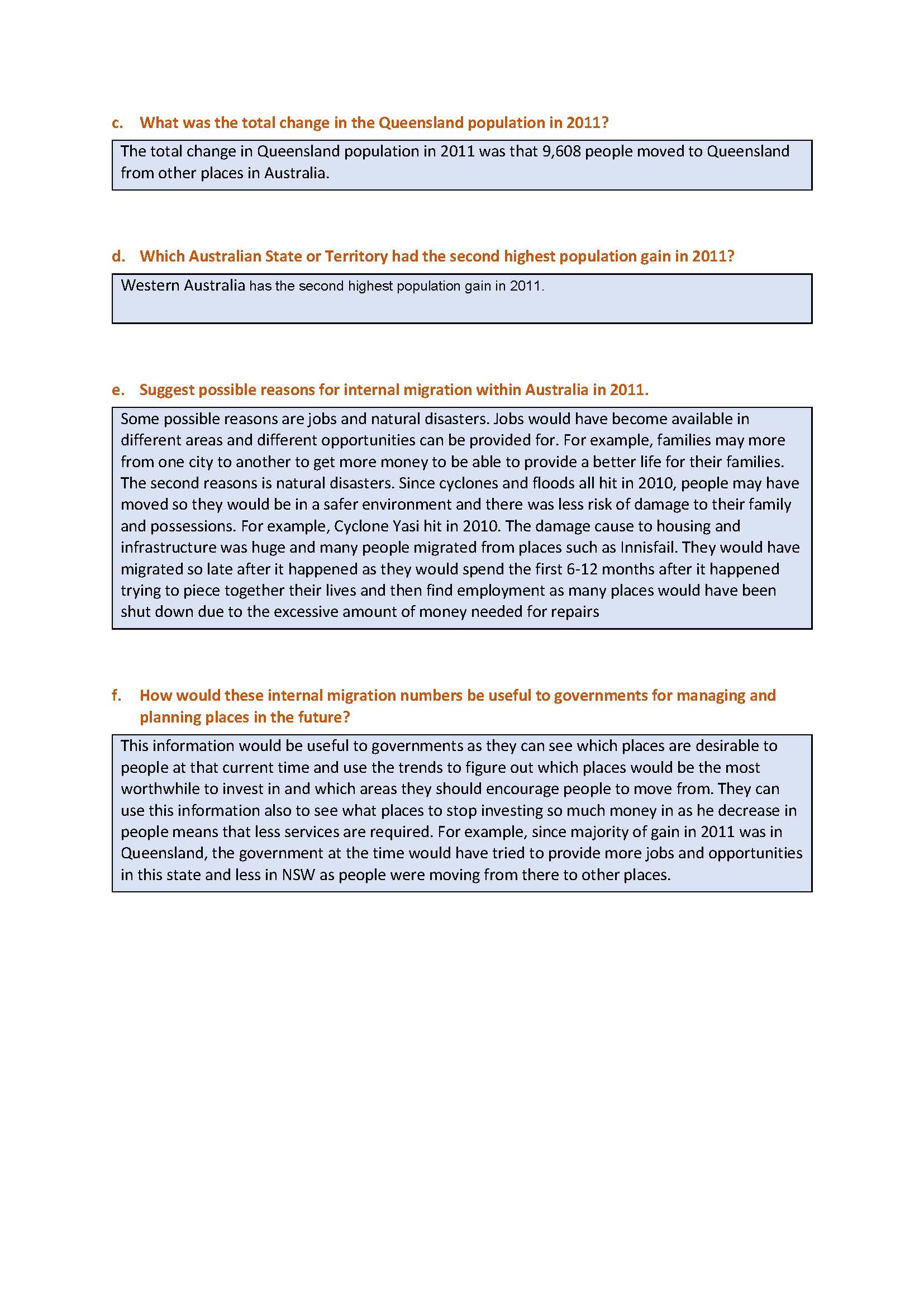 1
Annotation 1
1
Annotation 1
Expresses data findings to show value and context 2 Annotation 2
Locates migration data in a table 3 Annotation 3
Provides specific examples to support explanation 4 Annotation 4
Explains in detail the social, economic and environmental reasons for the internal migration of people 5 Annotation 5
Uses relevant geographical terminology 6 Annotation 6
Uses specific examples to support predictions 7 Annotation 7
Presents a series of predictions based on the internal migration data
-
Annotations
-
1
Annotation 1
Expresses data findings to show value and context -
2
Annotation 2
Locates migration data in a table -
3
Annotation 3
Provides specific examples to support explanation -
4
Annotation 4
Explains in detail the social, economic and environmental reasons for the internal migration of people -
5
Annotation 5
Uses relevant geographical terminology -
6
Annotation 6
Uses specific examples to support predictions -
7
Annotation 7
Presents a series of predictions based on the internal migration data
Copyright
Australian Bureau of Statistics 2012 (Creative Commons licensing)
© Commonwealth of Australia
